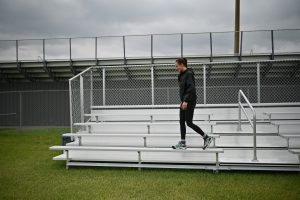The Decision to get ACLR Surgery
This post talks about my decision to get ACLR surgery.
Tearing your ACL is really three separate injuries:
- The initial injury – this can be just your ACL, but commonly has other ligaments, meniscus or boney injuries involved. Then comes the “prehab” before your surgery
- The surgical repair (if you go down this route) – the surgeon reconstructs your ACL usually with a graft of your own tendon, which brings me to the third injury
- The graft site – usually your hamstring tendon, patellar tendon or quad tendon
I didn’t end up getting imaging (you would need a MRI) to confirm these types of injuries. There are certain special tests your physio and sports med doc will perform – mine were quite clear about the ACL being completely torn. I also had minimal to no pain in my knee which is usually conducive to a complete ligament rupture. I had ample instability that was the biggest issue for me and I was on crutches for almost four weeks while the swelling decreased, I gained range of motion and strength back. When they did perform the surgery, they found a bucket handle tear of my lateral meniscus that would’ve occurred at the time of the injury. Having imaging earlier likely would’ve got me into surgery sooner as well due to this secondary injury, but the extended time gave me more time for prehabilitation. I was able to get in about 3 months of solid prehab leading into the surgery. It is supported that doing training/rehab prior to surgery to build back muscle mass and ROM is important.
Making the decision to get the reconstruction surgery is multi-factorial.

There is plenty of evidence showing that the ACL CAN heal without surgery. That’s another reason why giving yourself at least 3-4 months of progressive rehabilitation is important, you may find that your knee functions great, you don’t have instability and you are back to the activities you want to be doing. Therefore, it’s even more important to have a solid rehab team behind you – a surgeon who supports the initial rehab plan, a physio who understands the progressive overload behind your rehab and a way to test your strength and abilities as you move forward.
My decision was based on the sport I wanted to get back to and the amount of instability I was experiencing. Even with 3 months of rehab, my knee did not feel stable and I felt like if I did something suddenly or with too much force it would give way. Over those three months, I didn’t put myself in those situations as I didn’t want to risk further injury prior to the surgery.
At first, covid kept pushing the surgery date back, but eventually I received a date then physically and mentally prepared myself for the next year was about to look like. Another important aspect that should be covered with your physiotherapist thoroughly, as many surgeons do not have the time to go through what the recovery process entails.
There are studies showing that you should be mentally and physically preparing for at least 12 months of intensive, focused rehab. There is higher risk of re-rupture of the graft or rupture of the ACL on the other leg if you return to sport too soon (before 9 months post-op).
Whether you chose surgery or not, the rehabilitation process must be done purposefully if you wish to return to activity and reduce the risk of further injury.
You can purchase the ACL Injuries ebook where I talk about my experience, what to expect, graft options, how to find a physio, the mental aspect of the injury, and physical timelines to expect during recovery.
You can find my Guides on Instagram here:
I speak about tearing my ACL on my instagram here:
If you have questions regarding ACLR, I do recommend you speak to your own physio and surgeon as they know your injury. There are a few instagram pages that have great resources for those going through an ACLR which you can find here:


